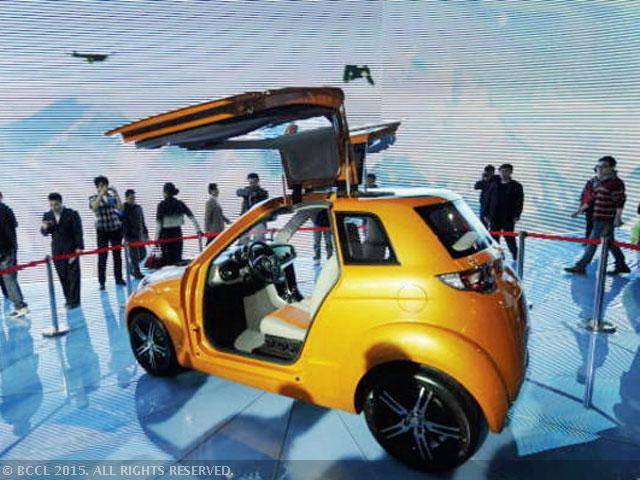Nevada is starting to look like the place where the electric car’s future will be decided. Last June, Tesla broke ground on a $5-billion battery plant in Sparks, and on Wednesday, Chinese startup Faraday Future announced that it had chosen a Las Vegas suburb as the site for a new $1-billion plant to make electric vehicles. Faraday hopes to roll out a competitor to Tesla’s flagship Model S in 2017.
But as glitzy as these bets are, the real action is happening in China, where smoggy skies and government subsidies are creating the perfect conditions for electric vehicles to thrive. The proof is in the numbers. According to data released this week by the China Association of Automobile Manufacturers, sales ofelectric cars are poised to exceed those in the US for the first time. Already, they’ve grown 290 per cent year-on-year to 171,145 vehicles. They’re expected to reach 220,000 to 250,000 for the year, whereas theUS market is predicted to top out at around 180,000 cars.
What’s fuelling the mainland’s electric car surge? As with so many other things in China, cost is the main factor. Take Xindayang, a 14-year-old electric-vehicle manufacturer that recently linked up with Geely, the Chinese car goliath that owns Volvo. Xindayang’s recently released D2 is designed for urban-dwellers who drive short distances and don’t generally use the highway. It’s not a high-end ride: A 2013 review of Xindayang’s first model, the D1, claimed it made “golf carts look luxurious by comparison.” Meanwhile, according to Forbes, the D2 makes a “harsh rattle” as it goes from 0 to 30 mph in a turtle-like 10 seconds.
What the D2 does have is an eyecatchingly low price of $10,000, compared to $70,000 for Tesla’s Model S. That’s helped Xindayang to sell 32,000 cars this year, roughly comparable to the 33,157 cars sold worldwide by Tesla through the third quarter. “The guy who’s making the $100,000 car is not changing the world,” one of Xindayang’s financiers boasted to Forbes, referring to Tesla’s flamboyant founder Elon Musk. “The guy who is making the $10,000 electric vehicle is changing the world.”
Of course, if not for a combination of local and national subsidies, Xindayang’s cars would cost more than twice as much. Depending on where a vehicle is purchased in China, incentives for buyers can be even more generous. Shenzhen, a metropolis of 15 million that’s home to BYD, an electric-carmaker which countsWarren Buffett as an investor, committed in March to investing as much as $800 million in support for electric vehicles. That includes a $5,600 subsidy for locals on the BYD Qin plug-in hybrid-electric vehicle. Combined with national subsidies, that knocks down the car’s price by a third to $20,000.
While the US offers subsidies as well, China’s are far more generous. Equally important, they’re increasingly focused on infrastructure and long-term incentives to support electric car buyers, rather than purchase subsidies. For example, Shenzhen is also subsidising the installation of charging stations throughout the city while China’s State Council — its top lawmaking body — recently announced that the government would help develop charging infrastructure and standards for five million plug-in cars. New housing developments will also be required to include charging facilities.
Meanwhile, local governments are offering free parking and registration for electric cars, insurance subsidies, carpool lanes and — in Beijing — access to highways on days when pollution levels are so high that other vehicles are heavily restricted. BYD says that combination of benefits produced a visible uptick in buyers seeking electric cars in Beijing during this week’s “airpocalypse,” during which gasburning cars were forced off the capital’s roads.
Electric vehicles still face challenges in China. When announcing its sales expectations for the year, the China Association of Automobile Manufacturers called on its members to focus on quality over quantity. Designing cars that don’t remind buyers of golf carts is a good place to start; for their part, regulators need to be vigilant about potential safety problems. Still, there seems little doubt that whatever electric cars become will be determined on China’s city streets, not out in the Nevada desert.
[“source-indiatimes”]






